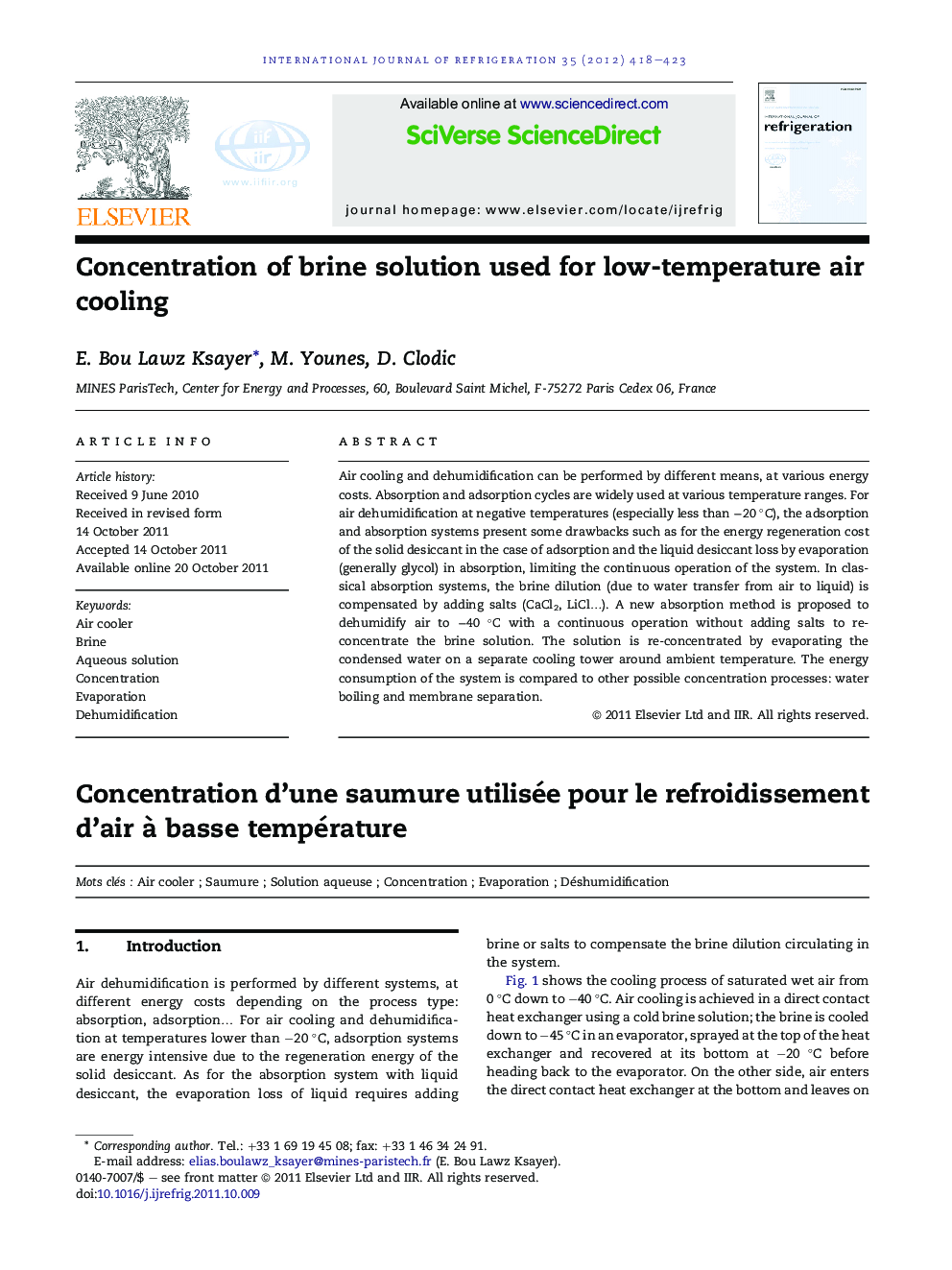| Article ID | Journal | Published Year | Pages | File Type |
|---|---|---|---|---|
| 787166 | International Journal of Refrigeration | 2012 | 6 Pages |
Air cooling and dehumidification can be performed by different means, at various energy costs. Absorption and adsorption cycles are widely used at various temperature ranges. For air dehumidification at negative temperatures (especially less than −20 °C), the adsorption and absorption systems present some drawbacks such as for the energy regeneration cost of the solid desiccant in the case of adsorption and the liquid desiccant loss by evaporation (generally glycol) in absorption, limiting the continuous operation of the system. In classical absorption systems, the brine dilution (due to water transfer from air to liquid) is compensated by adding salts (CaCl2, LiCl…). A new absorption method is proposed to dehumidify air to −40 °C with a continuous operation without adding salts to re-concentrate the brine solution. The solution is re-concentrated by evaporating the condensed water on a separate cooling tower around ambient temperature. The energy consumption of the system is compared to other possible concentration processes: water boiling and membrane separation.
